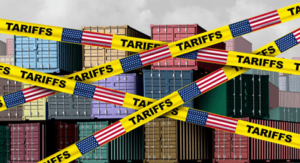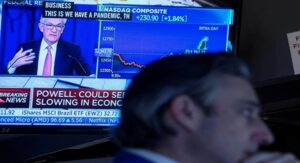
Unraveling the Global Banking Regulations: Decoding Basel 3.1 vs. Basel 4
Global banking regulations are entering a critical phase as the Basel Endgame unfolds, a saga reminiscent of existential angst and political maneuvering. Dubbed Basel 3.1 initially, the debate now encompasses broader implications, akin to a major reworking of the financial composition. While some nations swiftly move forward, others, like the United States, find themselves mired in prolonged deliberations, highlighting divergent approaches in Western jurisdictions.
As regulators grapple with complex dynamics, the quest for common global standards appears increasingly daunting. In this intricate dance of power and policy, the true endgame remains elusive, echoing Samuel Beckett‘s portrayal of futile attempts to impose order on chaos.
Global Banking Regulations
In the ever-evolving aspect of global banking regulations, the discourse surrounding Basel 3.1 and Basel 4 has reached a critical juncture. Initially perceived as a mere adjustment to existing frameworks, the final proposals have sparked intense debate within the financial sector, prompting contrasting interpretations and raising questions about the future trajectory of regulatory standards.
Read More: How SWIFT’s CBDC Challenges BRICS Currency
As stakeholders grapple with the implications of these regulatory updates, understanding the nuances and implications of Basel 3.1 versus Basel 4 becomes imperative in navigating the complexities of the global banking industry.
Table of Contents
1. Basel 3.1 vs. Basel 4 (A Clash of Interpretations)
The discourse surrounding global banking regulations, including Basel 3.1 and Basel 4, reveals contrasting viewpoints on regulatory evolution. Regulators stress continuity and gradual improvements, contrasting with financial institutions’ perception of a significant overhaul akin to a new regulatory framework. This disparity underscores differing interpretations of the reforms’ extent and implications, fueling potentially contentious debates.
The divergent nomenclature reflects varied perspectives, with regulators highlighting incremental changes while financial institutions anticipate a paradigm shift. This dichotomy sets the stage for nuanced discussions about the scope and impact of proposed reforms, emphasizing the complexity and potential disagreements inherent in navigating regulatory outlooks.
Read More: Global Banking Turmoil
2. The Basel Endgame (A Metaphor for Regulatory Uncertainty)
The term “Basel Endgame” encapsulates a feeling of existential despair akin to Samuel Beckett’s works. It signifies the ongoing struggle within global banking regulation, mirroring Beckett’s themes of futility. Despite prolonged discussions and political tactics, achieving consensus on international banking standards remains elusive, particularly amidst the intricate web of global banking regulations.
This struggle underscores the complexities of aligning regulatory frameworks across diverse jurisdictions, akin to Beckett’s exploration of human struggle and the absurdity of existence. Like characters in a Beckett play, regulators seem caught in a perpetual cycle of negotiation and uncertainty, grappling with the inherent challenges of harmonizing disparate regulatory sceneries in the global financial system.
3. Global Fragmentation (Divergent Approaches to Banking Regulation)
The regulatory views of banking supervision and capital requirements varies widely across regions, with stark differences in approaches. Countries like Singapore and Australia have rapidly adopted regulatory reforms, whereas the United States faces prolonged deliberations, contributing to industry uncertainty. This divergence creates challenges for global financial institutions navigating disparate regulatory frameworks and adhering to global banking regulations.
Singapore and Australia’s swift embrace of reforms contrasts with the United States’ slower pace, exacerbating uncertainty within the banking sector. As a result, financial institutions must navigate complex regulatory environments, adapting strategies to accommodate varying degrees of regulatory stringency and oversight.
4. The European Union (Balancing Harmonization and Flexibility)
In the European Union, regulatory processes prioritize consistency among member states while considering diverse national interests. Basel agreements are integrated through directives or regulations, highlighting the nuanced balance between harmonization and flexibility. However, this approach poses a risk of diluting the integrity of the original Basel framework.
The EU’s regulatory outlook thus navigates between standardization and adaptation, aiming to ensure financial stability across its diverse economic situation, while also accounting for global banking regulations. This dynamic equilibrium reflects the complex interplay of supranational integration and national sovereignty within the EU framework, where regulatory decisions hold significant implications for the financial systems of member states.
Read More: First 25 Years of Euro
5. The United Kingdom (Post-Brexit Regulatory Autonomy)
Following Brexit, the United Kingdom has embraced its regulatory independence, notably entrusting the Bank of England with the authority to set capital rules. Amid occasional concerns, the UK demonstrates unwavering dedication to maintaining regulatory alignment with global standards, albeit with newfound autonomy.
This shift reflects the nation’s assertiveness in shaping its financial aspect post-Brexit, signaling a departure from EU oversight while ensuring compatibility with international norms, including global banking regulations. Despite uncertainties, the UK remains resolute in its commitment to a robust regulatory framework, balancing sovereignty with the imperative of aligning with global financial regulations.
6. The United States (Political Dynamics and Regulatory Oversight)
The regulatory environment in the United States is intricately influenced by political dynamics, with significant emphasis placed on the Federal Reserve’s role in banking supervision and global banking regulations. Yet, recent actions led by Fed Chair Jerome Powell highlight the complexities of balancing regulatory policy with political factors, prompting concerns about maintaining the autonomy of the central bank.
Powell’s interventions underscore the challenges inherent in navigating this intersection, where decisions may not only impact financial stability but also reflect broader political agendas. Consequently, questions arise regarding the ability to preserve the independence of the Federal Reserve amid evolving regulatory prospects and shifting political climates.
7. Towards Common Global Standards (The Elusive Quest)
Navigating varied regulatory landscapes and geopolitical complexities presents a significant hurdle in establishing unified global standards, particularly in the context of global banking regulations. The Basel Committee’s efforts to synchronize regulatory frameworks encounter formidable barriers, echoing Beckett’s “Endgame,” where stakeholders confront the existential struggle of consensus amid fragmentation.
Just as Beckett’s characters contend with absurd challenges, stakeholders wrestle with the intricacies of alignment in regulatory realms. This pursuit highlights the enduring challenge of harmonization amidst divergence, mirroring the tension between coherence and fragmentation in global governance.
Bottom Line
In conclusion, the discourse surrounding Basel 3.1 versus Basel 4 underscores the intricacies of global banking regulations and the formidable challenges inherent in achieving harmonization across diverse jurisdictions.
As stakeholders navigate the uncertainties of regulatory reform, the quest for common global standards, including global banking regulations, remains a daunting yet imperative endeavor in safeguarding the stability and resilience of the international banking system.





